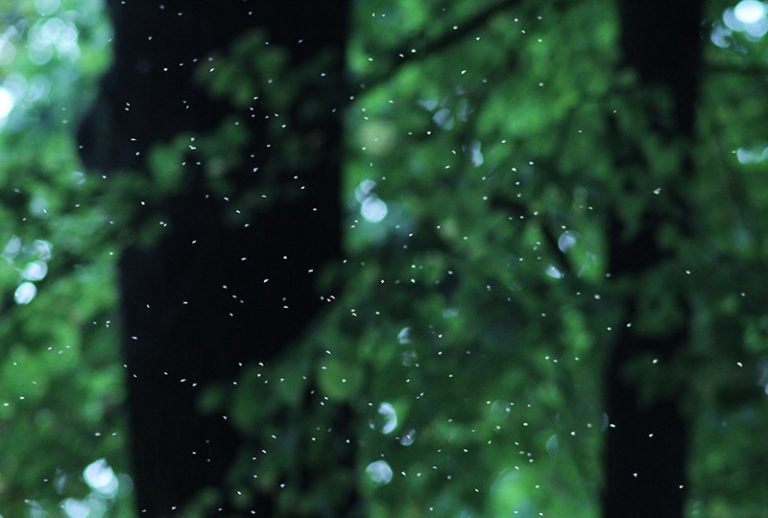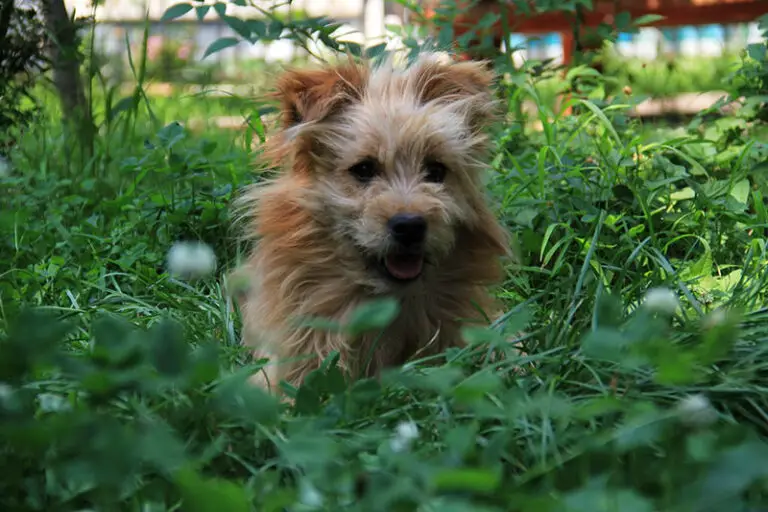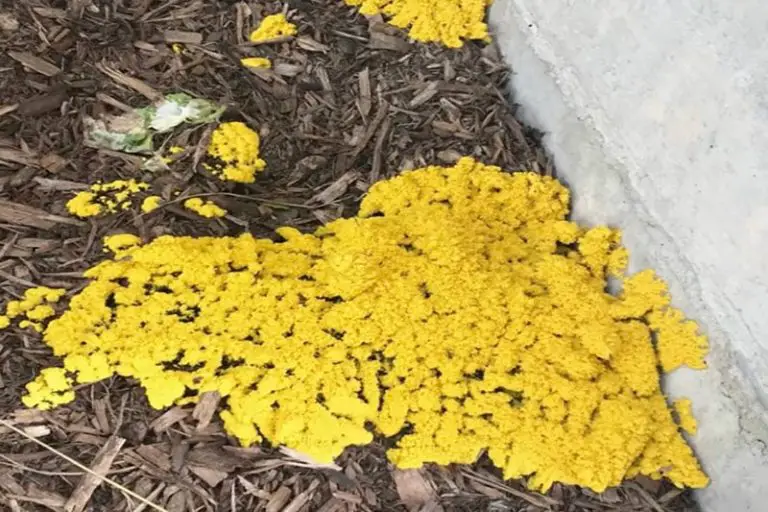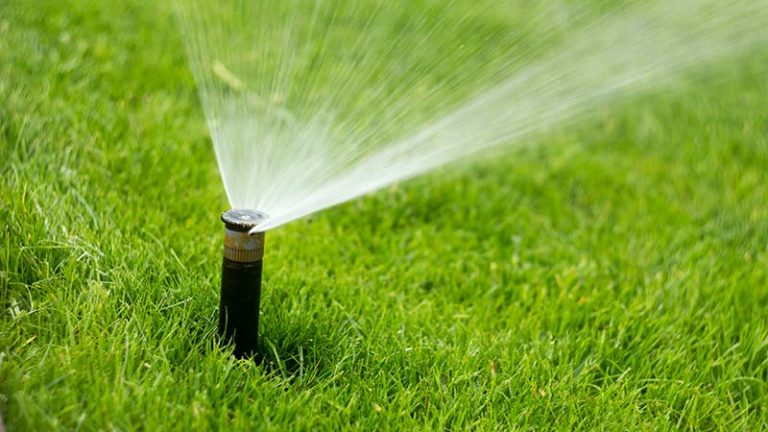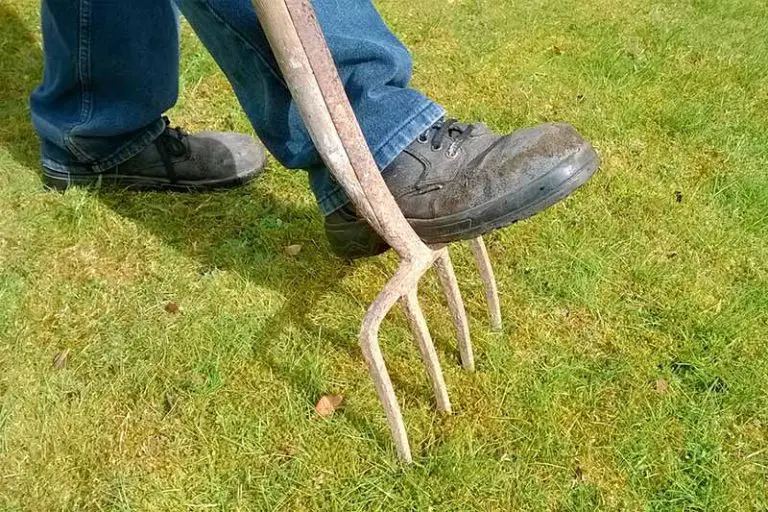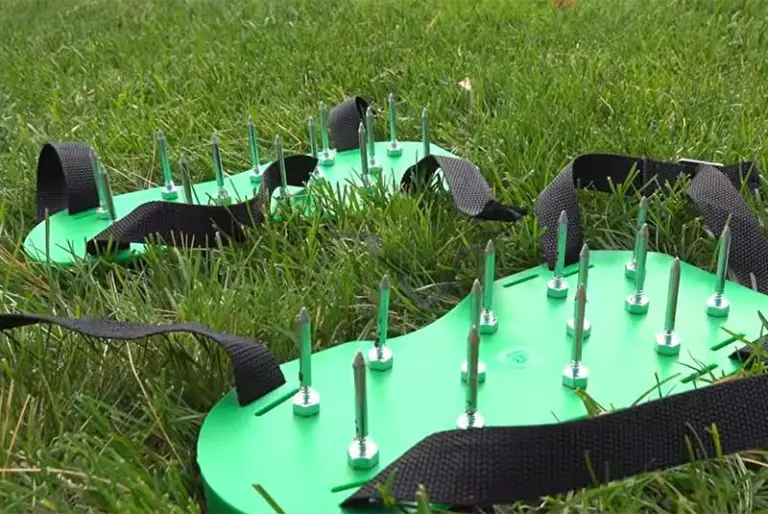Fix Brown Patches in Your Lawn: Causes and Solutions
The four main causes of brown patches in the lawn are lawn fungus infestations, environmental or maintenance-related issues, traffic damage from people or pets, or pest damage. All of these issues could potentially be the culprit behind the patches of dead grass in your lawn. To fix brown spots in grass, you need to identify the cause before carrying out the correct treatment that your lawn requires.
What Causes Brown Patches in Lawn?
The brown patches of grass on your lawn could indicate one or multiple issues, ranging in severity and treatment. Fungal disease, environmental or maintenance issues, traffic damage, and pest damage are all potential causes of the brown spots on your lawn.
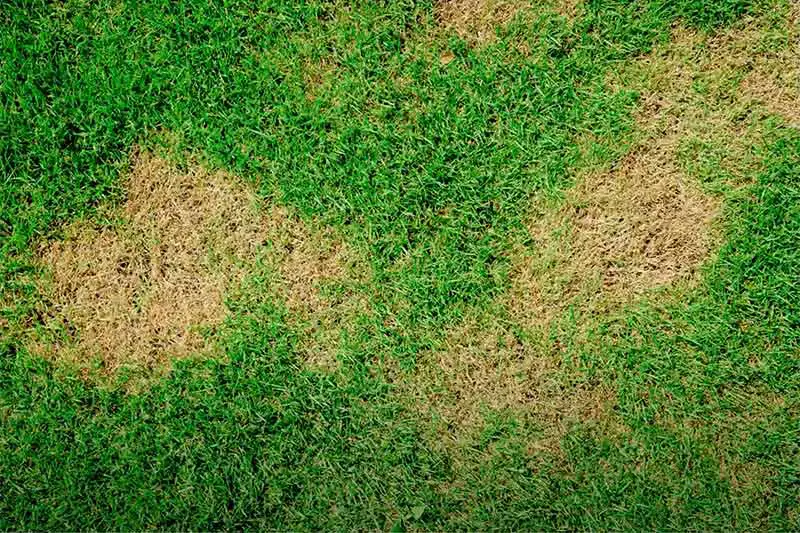
1. Lawn Fungus
One of the most common reasons for brown patches in the lawn is fungal disease.
Turf damage that occurs from lawn fungus appears as irregular patches of dead grass. If your lawn has been suffering from the disease for a while, the grass in the center of the ring may recover; this will leave behind a ring of dead brown grass.
The most common types of fungal diseases that cause brown patches on lawn include:
- Anthracnose
- Brown patch lawn disease
- Dollar spot fungus
- Fairy ring
- Gray leaf spot
- Large patch fungus
- Leaf spot
- Pythium blight
- Lawn rust
- Spring dead spot
- Summer patch lawn disease
- Take-all root rot
Fungal diseases are more likely to develop when the weather is warm, and overly humid or rainy. Your lawn is also more susceptible to fungal disease if it receives little sunlight, and has poor air circulation and drainage.
2. Environmental or Maintenance Issues
There are several different environmental factors that can impact the health of your lawn. These issues can arise as a result of insufficient lawn maintenance, or may just be due to the natural properties of your lawn.
Grass Dormancy
If your lawn is turning brown and patchy, this may simply be an indication that your grass is turning dormant.
While dormant grass may appear dead, it’s actually still very much alive. Dormancy is a mechanism that grass has developed in order to survive when there is little water available in the turf. Your grass will also turn dormant when temperatures are too low to support its growth. Although the grass blades turn brown and appear dead, the crown and roots remain alive, surviving on the grass’ stored nutrients.
When conditions return to favorable for growth, i.e. temperatures rise or water is added, the grass will green back up. However, grass can only remain in a dormant state for so long without dying. Extensive periods of drought that last more than a few weeks will cause patches of dead grass in the lawn.
Watering Too Much or Too Little
Both overwatering and underwatering the grass can cause brown patches on the lawn.
If you add too much water to your lawn, the saturated turf can suffocate the grass’ root system. Excessive moisture in the lawn will also encourage the development of fungal lawn disease. Additionally, if you water too frequently, this encourages the grass to grow shorter roots, weakening the plants against stress. All of these conditions can cause brown patches of dead grass.
On the other hand, if you don’t water your lawn enough, this too will cause brown patches on the lawn. As we’ve just explained, periods of drought trigger the grass to enter a state of dormancy.
Mowing Improperly
If you mow the grass too regularly or too short, or use dull mower blades, these improper mowing practices can cause brown patches in the lawn.
All grass types have their own recommended cutting height range for optimum grass health. If you cut your grass too short for its species, the grass is more vulnerable to disease and becoming burnt. Mowing too short will also encourage the grass to grow shorter roots, which further weakens your lawn against stressful conditions. These issues can also arise if you take off too much of the grass’ height in one go. As a result, patches of dead grass may form throughout the lawn.
Another issue associated with improper mowing is to mow with dull or damaged mower blades. When mower blades are dull, they aren’t able to get a clean cut on the grass; instead, the mower has more of a tearing action on the grass. This too may cause brown spots on the lawn.
Soil Compaction in Lawn
If your soil becomes overly compact, grass will struggle to grow in the areas of compaction.
Soil compaction occurs naturally over time from usage of the lawn and other external conditions like the weather. Compaction is another term for when the soil becomes hard from the soil’s particles being pushed together; when the particles get pushed together, this pushes out spaces and pockets in the turf.
Without these spaces, essential elements like air, water, and nutrients are unable to circulate around the grass’ roots. The grass plants suffer as a result, causing brown spots on the lawn. Although some compaction in the turf is inevitable, this issue is exacerbated by poor lawn maintenance and/or clay-heavy soil.
Excess Thatch on Lawn
An overly thick layer of thatch can stifle grass growth on your lawn.
Thatch is the layer of tangled organic matter that lays on the soil surface below the upward growth of the grass. This layer naturally accumulates over time from dead plant material that falls on the lawn. A slight amount of thatch is not a concern, and can actually be beneficial for the health of your lawn. However, when the thatch layer develops to be over ½ inch thick, it can create issues with the living grass.
When the thatch layer is too thick, it forms a dense barrier over the lawn. This blocks water and nutrients from rainfall, irrigation, and fertilization, preventing them from reaching your grass’ roots. Without these essential elements, your lawn will turn patchy and dead. Reducing the thatch layer as necessary is a vital practice to avoid these issues.
Insufficient Lawn Fertilization
Fertilizing too much, too little, or at the wrong time, are all issues that may leave you with patches of dead grass in the lawn.
The grass on your lawn needs a range of readily available nutrients to thrive, primarily nitrogen, phosphorus, and potassium. Although they occur naturally in soil, these nutrients will deplete over time. You can replenish these nutrients in your lawn by fertilizing the grass; without proper fertilization, it’s likely you’ll end up with patchy dead grass.
With that said, overfertilization can be even more of an issue than not fertilizing enough. Fertilizers, particularly high-nitrogen formulas, contain salts. Adding too much fertilizer or fertilizing too often causes these salts to build up in the turf; you’ll then see the signs of having too much nitrogen in the soil, i.e. there will be dead patches of grass on the lawn.
Another common mistake with lawn fertilization is to fertilize at the wrong time of year. You need to fertilize your lawn during the active growth period for your grass. Fertilizing outside of this window means you won’t deliver the right amount of nutrients to your grass at the right time. This could ultimately leave you with patches of grass dying off.
Soil Erosion
If there are brown patches of grass specifically on sloped areas of your lawn, this could be due to soil erosion.
Soil erosion occurs when water from rainfall or irrigation washes down sloped areas of the lawn. As it runs off the slope, the water takes soil, seed, and young grass shoots with it. This can leave the slope with bare or dried-out soil; your lawn will then appear to have patchy dead grass on these areas.
3. Human or Pet Damage
The more use your lawn gets, the more stress it puts on the grass plants. Excessive usage from people or pets may cause patches of dead grass in the high-traffic areas of the lawn.
Traffic Damage on Lawn
If damage occurs from traffic, brown patches of grass may develop in concentrated patches or throughout the whole lawn.
Traffic damages grass in two ways. Firstly, regular use from people, pets, or vehicles tramples the visible growth of the grass on the lawn’s surface. Secondly, the pressure from heavy usage causes areas of severe compaction; as we’ve already explained, compaction further damages your lawn by creating poor growing conditions for the grass.
Pet Urine Damage on Lawn
Not only do pets damage grass through running and playing, they can also brown spots on the lawn where they pee.
Pet and animal urine, especially that of female dogs, is very high in nitrogen. Although nitrogen is one of the most important nutrients for grass, too much nitrogen is a problem. Damage from pet or animal urine appears as concentrated patches of dead grass in the lawn; these yellow or brown spots may also be encompassed in a ring of bright green where the nitrogen fertilized the grass.
4. Pest Damage
Several different types of pests can cause brown patches in the lawn, including grubs and chinch bugs.
Grubs
If your lawn is infested with grubs, the brown spots on the lawn will start off small and gradually expand into wider patches of dead grass.
Grubs are the larval form of a few different species of beetles and chafers. These pests damage lawns by feeding on the grass’ roots. The healthier your grass is, the more tolerant it will be to grub feeding; however, heavy grub infestations or infestations on struggling grass will cause expanding brown spots on the lawn.
You can confirm the presence of grubs by lifting up on a corner of a piece of turf. If you’re able to pull up the turf like a carpet with little resistance, you’re likely dealing with grubs. Upon pulling up the turf, also look for the actual grubs themselves; these pests look like fat, white, c-shaped worms.
Chinch Bugs
Another common lawn pest that can create brown spots on the lawn are chinch bugs.
Chinch bugs harm grass plants by feeding on the upward growth of the grass. These pests use their needle-like mouthparts to pierce into the grass’ blades, before sucking out the plants’ internal moisture. This feeding process damages grass by robbing the plant of moisture; as they feed, chinch bugs also release a toxin that breaks down the grass’ plant tissues, causing further damage. As a result, an infestation of these pests can create large patches of dead grass on the lawn.
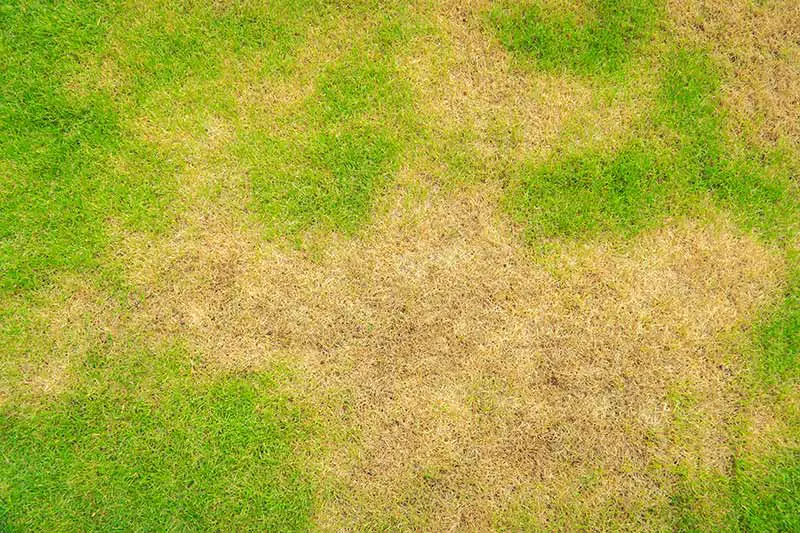
How to Fix Brown Spots on Grass
1. Treat Fungal Lawn Disease
If you identify that lawn fungus is the culprit for the brown spots in your lawn, you’ll need to treat the disease appropriately. Different types of fungal lawn diseases require different control measures; the first step towards treating the disease is to determine which fungus you’re dealing with.
Once you’ve identified the disease, find out the most appropriate method of control to curb the infestation. This could be the use of a natural or chemical fungicide or deploying cultural controls like improving drainage and air circulation in your yard. After successfully treating the disease, you can then fix the brown spots in the grass by reseeding.
2. Adjust Lawn Maintenance Routine
Proper mowing, watering, aeration, dethatching, and fertilization are all key elements of a thorough lawn maintenance routine. Carrying out these care practices the right way will significantly help to prevent brown patches in the lawn.
Mow Lawn Properly – Mow your lawn regularly to maintain it at the optimal height for your grass species. Always follow the ⅓ rule when mowing, i.e. never remove more than ⅓ of the grass’ total height per session; cutting off too much of the blades’ height in one go can shock the grass, causing widespread dead patches on the lawn. Also, make sure you always mow with sharp mower blades.
Water Lawn Enough – Irrigating to add the right amount of water at the right time will reduce the likelihood of brown spots on the lawn. For mature grass, you should water the lawn 1 to 2 times per week, adding 1 to 1.5 inches of water. Remember to factor into this amount any rainfall that occurs over the week.
Water Lawn at Right Time – The best time to water your lawn is during the early morning between the hours of 6am and 10am. If morning irrigation isn’t suitable for your schedule, the next best time to water is between 4pm and 6pm. Avoid watering in the middle of the day, as much of the water will be lost to evaporation; also avoid watering later than 6pm as doing so won’t allow enough time for the lawn to dry before nightfall. Both of these irrigation mistakes are likely to leave you with brown spots on the lawn.
Aerate Lawn as Necessary – You need to aerate your lawn when the soil becomes compact to keep your grass green and thick. In terms of how often to aerate, this could be every year to every 3 years depending on your particular lawn. If you have clay-heavy soil or high-traffic areas, aerate annually; if you have sandy soil or your lawn is generally in good condition, aerate every 2 to 3 years instead.
Dethatch Lawn as Necessary – You will also need to dethatch your lawn as part of your regular maintenance routine. Dethatch your lawn routinely when your thatch layer exceeds ½ inch in thickness. You can use a rake, a dethatching mower attachment, or powered dethatching equipment, depending on the size of your lawn.
Fertilize Lawn Properly – Fertilize your lawn no more than 2 to 4 times during the year. The best time to fertilize your lawn is during the period of most active growth for your species; for cool-season grasses, this means fertilizing during the spring and fall, and for warm-season grasses, instead fertilizing from the late spring throughout summer. Test your soil to find out the best fertilizer ratio to use on your lawn; ideal NPK ratios vary depending on your soil, the grass you’re growing, and the stage of growth that the grass is at.
3. Counteract High Traffic on Lawn
If your lawn gets a lot of regular use, it will be necessary to take some measures to counteract the traffic damage.
Remember to aerate your lawn as part of your regular maintenance activities to counteract the compaction that traffic causes. If the traffic damage is concentrated into specific areas that get high use, encourage people and pets to use other parts of the lawn. You can repair dead patches of grass caused by traffic by overseeding the lawn; the best grass for overseeding is one that is compatible with your climate and tolerant in high-traffic areas.
4. Control Lawn Pests
If you identify that pests are causing the brown patches on your lawn, you’ll need to treat the area with a suitable pesticide.
As we’ve explained, grubs and chinch bugs are the two most common lawn pests that cause dead grass patches in lawns. There are multiple cultural and chemical control measures you can take to get rid of these pests; identify the type of lawn pest you’re dealing with before taking the appropriate measures to eliminate the infestation.

